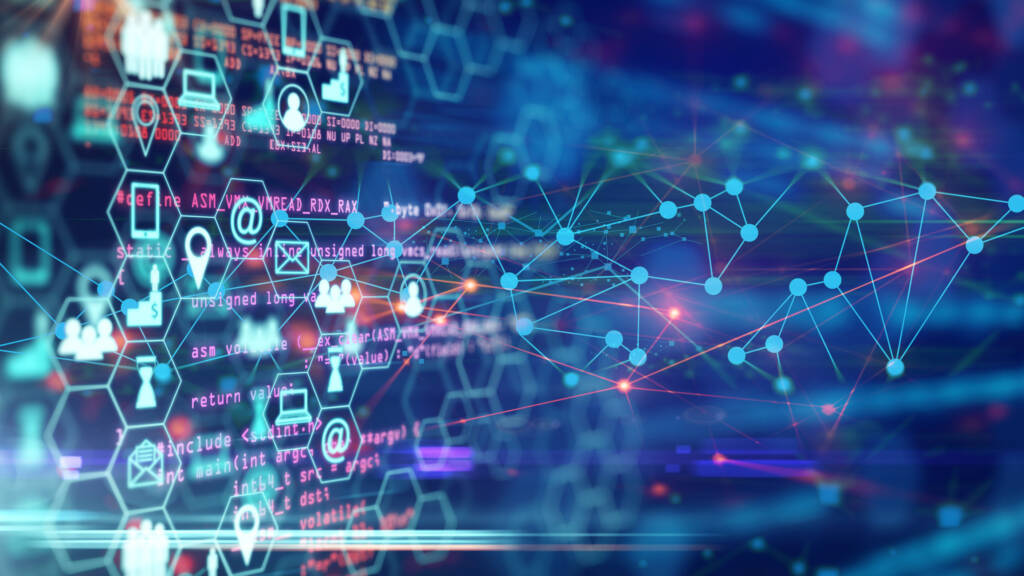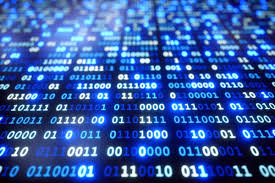
Table of Contents
Toggle“Binary Numbers” Everything You Need to Know
Binary numbers are the secret language behind our digital world. From the computers that power our daily tasks to the smartphones in our pockets, everything digital is built on a foundation of binary numbers. In this comprehensive guide, we’ll explore the world of Binary Numbers—what they are, how they work, their historical evolution, and why they are so crucial in today’s technology-driven society. Whether you’re a student, a tech enthusiast, or a professional seeking to deepen your understanding, this article will equip you with everything you need to know about binary numbers.
Introduction: Unlocking the Digital Code
Did you know that every image, video, and piece of text you see on your computer is ultimately represented by a string of 0s and 1s? In fact, the binary numeral system is the very language of computers, forming the backbone of all digital communication. With the explosion of technology over the past few decades, understanding binary numbers has become more important than ever. This post will cover:
- A clear definition of Binary Numbers.
- A look at the historical milestones and contextual background that shaped their evolution.
- An in-depth exploration of the key components and attributes of binary numbers.
- Real-world examples and case studies illustrating how binary numbers are applied.
- The importance, applications, and benefits of mastering binary numbers.
- Common misconceptions and frequently asked questions.
- Modern trends and emerging technologies that influence the role of binary numbers today.
Let’s embark on this journey to decode the very essence of digital information and discover how binary numbers continue to transform our world.
What Are Binary Numbers? A Straightforward Definition
Binary Numbers are a system of numerical notation that uses only two symbols: typically 0 and 1. Unlike the decimal system, which is based on ten digits (0 through 9), the binary system is base-2. Each digit in a binary number is referred to as a bit, and bits are the smallest units of data in computing.
Essential Characteristics
Base-2 System:
Binary numbers use only two symbols—0 and 1—to represent any numerical value. This simplicity is what makes the system so effective for digital computers.Positional Notation:
Like the decimal system, binary is a positional system where the position of each bit determines its value. Each bit represents an increasing power of 2, starting from the rightmost bit (2⁰, 2¹, 2², etc.).Digital Representation:
Every form of digital data—whether text, images, or sound—is encoded using binary numbers. This universal encoding system allows computers to process and store vast amounts of information.Logical Operations:
Binary numbers are integral to performing logical operations (AND, OR, NOT, XOR) in digital circuits and computer algorithms, making them essential for programming and data processing.
Understanding these core characteristics of binary numbers lays the groundwork for exploring how this simple system underpins the complexity of modern technology.
Historical and Contextual Background
The evolution of binary numbers is a fascinating journey that spans centuries and continents. What began as a philosophical and mathematical curiosity has become the backbone of our digital age.
Early Philosophical Roots
Ancient Civilizations and Early Mathematics:
Long before the advent of modern computing, ancient mathematicians explored different numeral systems. While many early systems were decimal-based, the concept of using a simplified set of numbers intrigued scholars. Philosophers in ancient India and China speculated about duality in nature—light and dark, existence and non-existence—which later resonated with the binary concept of 0s and 1s.The I Ching:
In ancient China, the I Ching (or Book of Changes) used a system of broken and unbroken lines to represent yin and yang. Although not a binary numeral system in the modern sense, it reflected an early understanding of dual states and influenced later binary concepts.
The Formalization of Binary Theory
Gottfried Wilhelm Leibniz (1646–1716):
The modern binary number system was formally described by the German mathematician and philosopher Gottfried Wilhelm Leibniz in the 17th century. Leibniz was inspired by the dualistic nature of existence and created a system based on two symbols—0 and 1—to represent all numbers. In his 1703 essay, he demonstrated how any number could be expressed using only these two digits, laying the theoretical foundation for binary arithmetic.Impact on Mathematics and Logic:
Leibniz’s work on binary numbers was not immediately adopted for practical use, but it eventually influenced the development of modern logic and computer science. His ideas laid the groundwork for later innovations in digital circuitry and information theory.
Binary Numbers in the Modern Era
Early 20th Century Developments:
As the field of electronics emerged in the early 1900s, engineers began to harness binary principles for practical applications. The advent of electronic circuits, which operate on two distinct states (on and off), made the binary system a natural fit for representing and processing data.The Birth of Digital Computers:
In the mid-20th century, pioneers like John von Neumann and Alan Turing recognized the potential of binary arithmetic for building computers. The development of the first digital computers in the 1940s and 1950s was based on binary logic, which allowed these machines to perform complex calculations and process data with unprecedented speed and accuracy.Revolution in Information Technology:
Today, binary numbers are at the heart of all digital systems. From smartphones and the internet to artificial intelligence and quantum computing, the binary system continues to drive innovation and shape the modern world.
This historical journey shows how binary numbers evolved from abstract concepts to indispensable tools that power our digital infrastructure.
In-Depth Exploration: Understanding Binary Numbers
To truly grasp the significance of Binary Numbers, we need to break down their key components, explore their properties, and see how they are applied in various contexts.
1. The Structure of Binary Numbers
Positional Notation and Bit Values
Binary Digits (Bits):
The basic unit of binary data is the bit. A bit can have one of two values: 0 or 1.Positional System:
In binary, the position of each bit determines its value. For example, the binary number 1011 represents:- 1 × 2³ (8)
- 0 × 2² (0)
- 1 × 2¹ (2)
- 1 × 2⁰ (1)
Adding these together, 1011 in binary equals 11 in decimal.
Place Values:
Similar to the decimal system where digits represent powers of 10, binary digits represent powers of 2. Understanding place values is essential for converting binary numbers to their decimal equivalents and vice versa.
Binary Arithmetic
Addition and Subtraction:
Binary arithmetic follows rules similar to decimal arithmetic but with only two digits. For example, 1 + 1 in binary equals 10 (which is 2 in decimal). These simple rules form the basis of all calculations in digital systems.Multiplication and Division:
Multiplication and division in binary are also straightforward. Multiplication is essentially repeated addition, and division is repeated subtraction, both performed using binary rules.Logical Operations:
Beyond arithmetic, binary numbers are used in logical operations (AND, OR, NOT, XOR), which are critical for decision-making processes in computer algorithms and circuitry.
2. Binary Data Representation
Representing Text, Images, and Sound
Text Encoding:
Text on computers is represented using binary codes such as ASCII or Unicode. Each character (letters, digits, symbols) is assigned a unique binary code. For example, the ASCII code for the letter “A” is 01000001.Image Representation:
Digital images are composed of pixels, each of which is represented by binary values corresponding to color information. Formats like JPEG and PNG compress and encode this binary data to display images efficiently.Sound and Video:
Audio signals are digitized by sampling sound waves and converting them into binary form. Similarly, video is a sequence of images (frames) that are encoded in binary, allowing for storage, transmission, and playback of multimedia content.
Data Storage and Memory
Binary Storage Devices:
Hard drives, solid-state drives, and memory modules store data as binary code. Magnetic storage and semiconductor memory both rely on binary states (magnetized vs. demagnetized, charged vs. uncharged) to represent 0s and 1s.Cloud Storage and Big Data:
In the digital age, vast amounts of data are stored in cloud servers. These data centers use binary encoding to manage and retrieve information quickly, underpinning everything from social media to financial transactions.
3. Practical Applications and Real-World Examples
Binary numbers aren’t just abstract concepts—they have real-world applications that impact our daily lives.
Computing and Digital Electronics
Processor Operations:
Modern computer processors perform calculations using binary arithmetic. Every instruction, from basic addition to complex machine learning algorithms, is processed in binary.Digital Communication:
Data transmission over networks, including the internet and mobile communications, relies on binary encoding to send and receive information reliably.Embedded Systems:
Devices like microwaves, cars, and medical equipment use embedded systems programmed in binary, controlling operations and ensuring precision.
Software Development and Programming
Programming Languages:
Although high-level languages abstract away binary details, the compiled code is ultimately represented in binary. Understanding binary helps programmers optimize code and troubleshoot low-level issues.Data Compression and Encryption:
Algorithms for compressing data (like ZIP files) and encrypting information (such as SSL certificates) operate on binary data to secure and efficiently manage information.
Scientific Research and Data Analysis
Big Data and Machine Learning:
Large datasets are stored and processed in binary. Advanced analytics, predictive modeling, and AI all rely on the binary representation of data to extract meaningful patterns and insights.Simulation and Modeling:
Scientific simulations—from weather forecasting to particle physics—use binary data to represent complex systems, enabling researchers to perform precise calculations and analyses.
The Importance, Applications, and Benefits of Understanding Binary Numbers
The study and application of Binary Numbers extend far beyond academic interest; they are critical to modern society. Here’s why understanding binary numbers is so important:
Enhancing Technological Literacy
Foundational Knowledge:
Grasping binary numbers is fundamental to understanding how computers and digital devices operate. This knowledge is essential for anyone in the technology field.Empowering Innovation:
By mastering binary, engineers, developers, and scientists can design more efficient systems, innovate new technologies, and solve complex problems.
Driving Efficiency and Accuracy
Error Reduction:
Binary systems are less prone to errors compared to more complex numeral systems, making them ideal for high-speed computing and digital communications.Streamlined Processes:
The simplicity of the binary system enables faster calculations, data processing, and information retrieval, which are critical in time-sensitive applications such as financial trading or emergency services.
Broad Applications Across Industries
Business and Finance:
In business, binary data drives decision-making through big data analytics, financial modeling, and secure transactions.Healthcare:
From medical imaging to patient data management, binary numbers are crucial for processing and storing sensitive information securely.Education and Research:
Educational institutions rely on digital platforms that use binary encoding to store vast amounts of information, making it accessible for research and learning.
Future Prospects and Emerging Trends
Quantum Computing:
While quantum computers use quantum bits (qubits) that can represent multiple states simultaneously, the principles of binary still underpin many aspects of classical computing, providing a bridge between current and future technologies.Internet of Things (IoT):
As more devices become connected, binary data becomes even more critical in ensuring that information is transmitted, stored, and processed accurately.
Understanding binary numbers not only enhances your technical skills but also provides a competitive edge in a world increasingly driven by digital information.
Addressing Common Misconceptions and FAQs About Binary Numbers
Despite their fundamental role in technology, several myths and misunderstandings about Binary Numbers persist. Let’s clear up some common misconceptions and answer frequently asked questions.
Common Misconceptions
Misconception 1: “Binary numbers are too complex for beginners.”
Reality: While the concept might seem daunting at first, binary numbers are based on a simple system with only two digits. With practice, anyone can learn to convert, calculate, and understand binary.Misconception 2: “Binary is only used in computing.”
Reality: Although binary numbers are central to digital devices, their applications extend to data transmission, cryptography, and even error detection in various fields.Misconception 3: “Learning binary is outdated in the era of high-level programming languages.”
Reality: Understanding binary is still essential because all high-level code is ultimately translated into binary instructions that computers execute.
Frequently Asked Questions (FAQs)
Q1: Why do computers use binary instead of decimal?
A1: Computers use binary because digital electronic circuits have two stable states (on and off). Binary’s simplicity minimizes errors and makes it easier to design and operate electronic systems.
Q2: How can I practice converting between binary and decimal?
A2: Practice by working on examples manually, and consider using online converters or educational apps that provide interactive exercises on binary conversion.
Q3: What are some practical applications of binary arithmetic?
A3: Binary arithmetic is used in programming, data encryption, digital communications, and even in algorithms that drive machine learning and artificial intelligence.
Q4: How does understanding binary benefit a non-technical person?
A4: Even if you’re not a programmer, understanding binary improves your digital literacy and helps you appreciate how devices and systems around you function.
Modern Relevance and Current Trends in Binary Numbers
Binary numbers continue to evolve as technology advances. Here are some current trends and modern developments that highlight the ongoing relevance of binary:
The Rise of Big Data and Cloud Computing
Massive Data Storage:
Cloud computing relies on the efficient storage and processing of binary data. As data volumes increase exponentially, the binary system’s simplicity and reliability remain essential for managing big data.Real-Time Processing:
Advanced analytics and real-time processing systems depend on binary encoding to perform rapid calculations and support time-sensitive applications like financial trading and emergency response.
Advancements in Artificial Intelligence
Machine Learning Algorithms:
AI and machine learning algorithms process vast datasets that are stored in binary. The ability to handle binary data efficiently is crucial for training complex models that power applications like speech recognition and autonomous vehicles.Enhanced Data Security:
As cyber threats evolve, secure binary encryption methods are being developed to protect sensitive data. Advances in cryptography often rely on the properties of binary numbers to create robust security protocols.
Quantum Computing and the Future of Binary
Quantum vs. Classical:
While quantum computing introduces the concept of qubits that can represent multiple states at once, the principles of binary computation still provide the foundation for classical systems. Researchers are exploring hybrid approaches that integrate quantum and binary systems.Bridging the Gap:
Understanding binary remains crucial as we transition toward quantum technologies. The ability to translate between classical binary data and quantum information will be key to harnessing the power of future computing systems.
Digital Transformation and IoT
Internet of Things (IoT):
With billions of devices connected globally, binary data enables efficient communication between sensors, gadgets, and control systems. IoT relies on binary signals to monitor and automate everything from smart homes to industrial operations.Edge Computing:
As computing moves closer to the data source, edge devices process binary data locally to reduce latency and improve responsiveness. This trend is critical for applications like autonomous vehicles and real-time surveillance.
Practical Applications: Leveraging Binary Numbers in Everyday Life
The practical applications of Binary Numbers are vast and diverse. Here are some ways binary is applied across various sectors:
In Education and Learning
STEM Education:
Understanding binary is a fundamental part of computer science and engineering curricula. Students learn binary arithmetic, data representation, and logical operations, forming the basis for more advanced topics.Coding Bootcamps:
Many coding programs introduce binary concepts early on to help learners understand how high-level code translates into machine language.Interactive Learning Tools:
Apps and online platforms provide interactive exercises for converting, calculating, and visualizing binary data, making learning accessible and engaging.
In Business and Finance
Data Analytics:
Business intelligence tools process vast amounts of binary data to generate insights for decision-making. From sales trends to customer behavior, binary data underpins modern analytics.Digital Marketing:
Online advertising platforms use binary algorithms to optimize ad placements, measure engagement, and target audiences with precision.Financial Transactions:
Every electronic transaction, from credit card payments to stock trades, is recorded and processed using binary data, ensuring accuracy and security.
In Technology and Engineering
Software Development:
At the core of every computer program is binary code. Developers rely on an understanding of binary to optimize algorithms, debug software, and build efficient systems.Hardware Design:
Microprocessors, memory chips, and digital circuits are designed using binary logic. Engineers use binary arithmetic to simulate and design electronic components.Cybersecurity:
Encryption algorithms, which protect sensitive information online, are built on complex binary operations that secure data against unauthorized access.
In Healthcare
Medical Imaging:
Technologies such as MRI and CT scans produce images by converting analog signals into binary data, enabling detailed analysis and diagnosis.Patient Monitoring:
Wearable devices collect and transmit binary data on vital signs, helping healthcare providers monitor patient health in real time.Genomic Research:
In bioinformatics, genomic sequences are analyzed as binary data, enabling breakthroughs in personalized medicine and genetic research.
Addressing Common Misconceptions and FAQs About Binary Numbers
Despite their fundamental role in technology, several myths about Binary Numbers persist. Let’s clear up some common misconceptions and answer frequently asked questions.
Common Misconceptions
Misconception 1: “Binary numbers are only for computer geeks.”
Reality: While binary numbers are essential in computing, understanding them enhances digital literacy for everyone. They help explain how everyday devices work.Misconception 2: “Learning binary is too technical for beginners.”
Reality: Binary is based on a simple concept—using only 0s and 1s. With practice and the right resources, even beginners can master binary arithmetic and conversion techniques.Misconception 3: “Binary is obsolete with modern high-level languages.”
Reality: Although high-level programming languages abstract binary details, all digital systems ultimately operate on binary code. A solid understanding of binary remains relevant and beneficial.
Frequently Asked Questions (FAQs)
Q1: Why do computers use binary instead of decimal?
A1: Computers use binary because digital electronic circuits operate in two states—on (1) and off (0). The binary system is simple, reliable, and minimizes errors in digital processing.
Q2: How can I practice converting between binary and decimal?
A2: Start with simple exercises and gradually work up to more complex conversions. There are many online tools and apps available that offer interactive practice with instant feedback.
Q3: What are the practical applications of binary arithmetic?
A3: Binary arithmetic is used in everything from basic computations in microprocessors to complex algorithms in data encryption and artificial intelligence.
Q4: How does understanding binary benefit non-technical professionals?
A4: It enhances digital literacy, improves problem-solving skills, and provides insights into how digital technologies function—useful in business, education, and everyday decision-making.
Modern Relevance and Current Trends in Binary Numbers
Binary numbers remain as relevant today as they were in the early days of computing. Here are some modern trends and developments that underscore the ongoing importance of binary:
Advancements in Digital Technology
Edge Computing and IoT:
With the proliferation of IoT devices and edge computing, binary data is processed locally on devices to reduce latency and improve efficiency. This trend relies on fast, accurate binary computations to manage data in real time.Artificial Intelligence:
Machine learning models and AI algorithms process and learn from massive binary datasets. As AI continues to advance, efficient binary processing is critical for training and deploying intelligent systems.
Evolving Computational Architectures
Quantum Computing Integration:
Although quantum computing introduces qubits that can represent more than two states, binary computing remains the foundation for classical computing. Researchers are exploring ways to integrate quantum and binary systems to enhance computational power.Neuromorphic Computing:
Inspired by the human brain, neuromorphic chips are being developed to process information in a way that mimics neural networks. While these systems incorporate non-binary elements, binary logic still plays a crucial role in their underlying architecture.
Data Security and Encryption
Enhanced Cryptographic Techniques:
As cybersecurity threats grow, advanced encryption methods based on complex binary algorithms are being developed to protect sensitive information. The evolution of cryptography continues to rely on binary principles to secure data.Blockchain and Distributed Ledgers:
Blockchain technology, which underpins cryptocurrencies and secure data transactions, relies on binary data for encoding and verifying information. The integrity of blockchain systems is built on robust binary encryption and consensus algorithms.
Conclusion: Embracing the Digital Language of Binary Numbers
Binary numbers are much more than abstract mathematical concepts; they are the fundamental building blocks of our digital world. By understanding Binary Numbers, you gain insight into how computers process data, how digital systems communicate, and how modern technology continues to evolve. From the simple elegance of a 0 and a 1 to the complex algorithms that drive artificial intelligence, binary is at the heart of innovation.
Key Takeaways
Foundation of Digital Technology:
Binary numbers underpin all digital systems, enabling everything from basic calculations to advanced data processing.Universal Language:
Whether you are a programmer, engineer, or casual user, understanding binary enhances your ability to navigate and appreciate the digital landscape.Ongoing Relevance:
Despite new technologies and computing paradigms, the simplicity and reliability of binary remain indispensable in today’s tech-driven world.
Call-to-Action
Reflect on how binary numbers influence the technology you use every day. Whether you’re interested in coding, digital art, or simply want to understand the science behind your smartphone, deepening your knowledge of binary can open new doors. We encourage you to share this guide with friends, colleagues, and anyone curious about the inner workings of our digital world. Engage with us in the comments below—let us know what questions you have or share your experiences with binary numbers. For more insights on digital technology and computer science, explore reputable sources like Harvard Business Review and Forbes.
Additional Resources and Further Reading
For those who want to dive even deeper into the fascinating world of Binary Numbers, here are some recommended resources:
Books:
- “The Information: A History, a Theory, a Flood” by James Gleick
- “Code: The Hidden Language of Computer Hardware and Software” by Charles Petzold
- “Gödel, Escher, Bach: An Eternal Golden Braid” by Douglas Hofstadter
Online Courses and Workshops:
Websites and Articles:
Communities and Forums:
- Join discussions on Reddit’s r/learnprogramming or r/compsci, where enthusiasts and professionals share tips and insights about binary and digital systems.
- Engage with tech communities on LinkedIn and specialized forums dedicated to computer science and digital electronics.
Final Thoughts
Binary numbers may seem simple—a string of 0s and 1s—but they hold the key to our digital future. By mastering the fundamentals of Binary Numbers, you empower yourself to understand and innovate within the ever-evolving world of technology. Every time you send an email, stream a video, or even check the weather on your smartphone, binary numbers are at work behind the scenes.
Take the time today to explore binary concepts further, practice converting between binary and decimal, and see firsthand how this elegant system drives the digital age. Every bit of knowledge you gain in understanding binary will not only enhance your technical skills but also deepen your appreciation for the marvels of modern technology.
Thank you for joining us on this journey into the world of binary numbers. We look forward to your feedback and encourage you to share this comprehensive guide with anyone interested in unlocking the secrets of the digital world.
Happy decoding, and welcome to the binary revolution!
Recent Posts
- “3.8: Iteration” Everything You Need to Know
- “3.7: Nested Conditionals” Everything You Need to Know
- “3.6: Conditionals” Everything You Need to Know
- “3.5: Boolean Expressions” Everything You Need to Know
- “3.4: Strings” Everything You Need to Know
- “3.3: Mathematical Expressions” Everything You Need to Know
- “3.2: Data Abstraction” Everything You Need to Know
- “3.1: Variables and Assignments” Everything You Need to Know
- “Unit 3 Overview: Algorithms and Programming” Everything You Need to Know
- “2.4: Using Programs with Data” Everything You Need to Know
- “2.3: Extracting Information from Data” Everything You Need to Know
- “2.2: Data Compression” Everything You Need to Know
- “2.1: Binary Numbers” Everything You Need to Know
- “Unit 2 Overview: Data” Everything You Need to Know
- “1.4: Identifying and Correcting Errors” Everything You Need to Know
Choose Topic
- ACT (17)
- AP (20)
- AP Art and Design (5)
- AP Physics 1 (1)
- AQA (5)
- Artificial intelligence (AI) (2)
- Banking and Finance (6)
- Biology (13)
- Business Ideas (68)
- Calculator (72)
- ChatGPT (1)
- Chemistry (3)
- Colleges Rankings (48)
- Computer Science (4)
- Conversion Tools (136)
- Cosmetic Procedures (50)
- Cryptocurrency (49)
- Digital SAT (3)
- Edexcel (4)
- English (1)
- Environmental Science (2)
- Etiology (7)
- Exam Updates (1)
- Finance (129)
- Fitness & Wellness (164)
- Free Learning Resources (210)
- GCSE (1)
- General Guides (40)
- Health (107)
- History and Social Sciences (152)
- IB (1)
- IGCSE (2)
- Image Converters (3)
- IMF (10)
- Math (43)
- Mental Health (58)
- News (11)
- OCR (3)
- Past Papers (463)
- Physics (5)
- SAT (39)
- Schools (3)
- Sciences (1)
- Short Notes (5)
- Study Guides (28)
- Syllabus (19)
- Tools (1)
- Tutoring (1)
- What is? (312)
Recent Comments

“2.4: Using Programs with Data” Everything You Need to Know
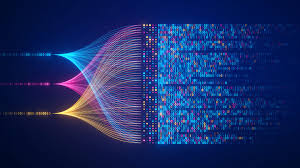
“2.3: Extracting Information from Data” Everything You Need to Know
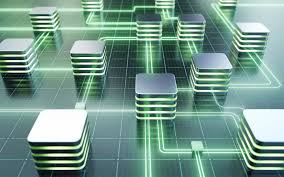
“2.2: Data Compression” Everything You Need to Know

“2.1: Binary Numbers” Everything You Need to Know
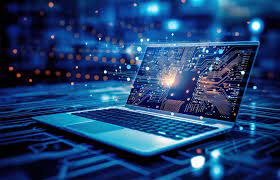
“3.8: Iteration” Everything You Need to Know
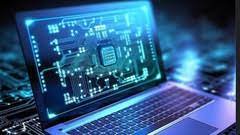
“3.7: Nested Conditionals” Everything You Need to Know
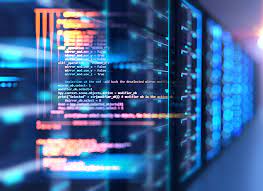
“3.6: Conditionals” Everything You Need to Know
